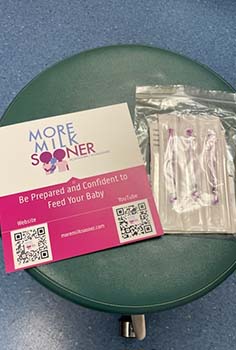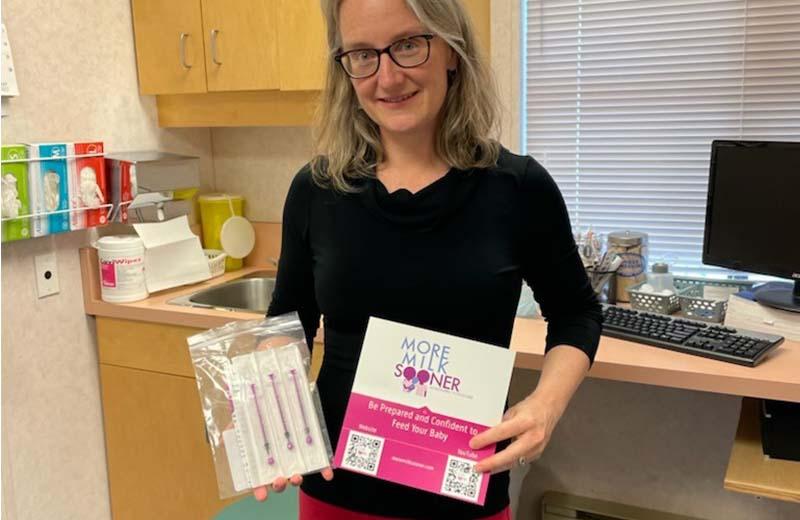Have you heard about hand expressing milk in pregnancy (also known as “antenatal milk expression”)? It can help to get breastfeeding off to a good start and is an option for most low-risk pregnancies from 36 weeks on. It’s gaining momentum among pregnant people and the health care providers who support them.
I had a chance to connect with Dr. Christine Brenckmann, a Prince George doctor who provides information on hand expression as a routine part of prenatal care.
How did prenatal hand expression come to be part of your practice?
I had heard about collecting colostrum (early milk) in pregnancy for clients who have diabetes. In these cases, a baby might have a low blood sugar after birth, and this can be treated with the parent’s own colostrum.
However, I wasn’t aware of hand expression in pregnancy as a possible strategy for other clients, as a way to help feeding get off to a good start. One of my clients made me aware of this - she had given birth in Saskatchewan, where clients got routine support to hand express colostrum in the weeks before baby’s arrival.
I connected with Naida Hawkins, a lactation consultant with the More Milk Sooner team. Naida got me started with information, pamphlets, and colostrum collection kits. And now, for the last two to three years, I have supported hand expression in pregnancy as a routine part of prenatal care.
What does this look like in your practice?
It’s been easy to build this into my practice. For clients with low-risk pregnancies, at the 34 week visit, I give them a laminated pamphlet to read that explains hand expression. If they’re interested, I give them a kit. This kit includes instructions, a QR code to the More Milk Sooner website, syringes to collect colostrum, and labels for those syringes.

Up to half of my clients are keen to try this. Some of them collect drops of colostrum in syringes, freeze it, and bring these syringes with them to the hospital in case baby might need it. Others just do the hand expression. Some don’t see any colostrum – this is not unusual. Even so, hand expression still “activates” the milk-making cells and helps their breasts to make more milk sooner after birth.
Clients have told me that this made feeding easier and that they had more milk, compared to their previous feeding experiences.
What would you like to share with other health care providers?
Promoting hand expression in pregnancy is one thing we can do to help prevent feeding issues. It’s stressful for families if feeding is not going well, and it can also effect the health of the baby. If we can help to get things off to a good start, we support the health of parents and babies, including parents’ mental wellness.
Also, when clients learn to do this before baby arrives, it’s one less thing to learn in the postpartum period, when they are sleep-deprived. It empowers parents with skills and builds their confidence: “I can do this; I can feed my baby.”
Where can folks go for more information?
I recommend the More Milk Sooner website, which has information and videos for clients and health professionals.
- Health professionals can learn about how to use this in practice, contraindications, and comforting messages on safety.
- Parents might be interested in learning more about prenatal hand expression, testimonials from other parents, and colostrum collection kits (Note: it may be possible to buy small syringes (e.g. 3 mL), with caps, online or from a local pharmacy).
If they’re interested, pregnant people should discuss this with their doctor or midwife, to confirm that theirs is a low-risk pregnancy for which this approach is supported.
Thank you, Christine, for sharing this inspiring story. It’s a simple and impactful change you have made to your practice.
For more information about breastfeeding and human milk, see Learning to breastfeed and our other Breastfeeding webpages.














Comments